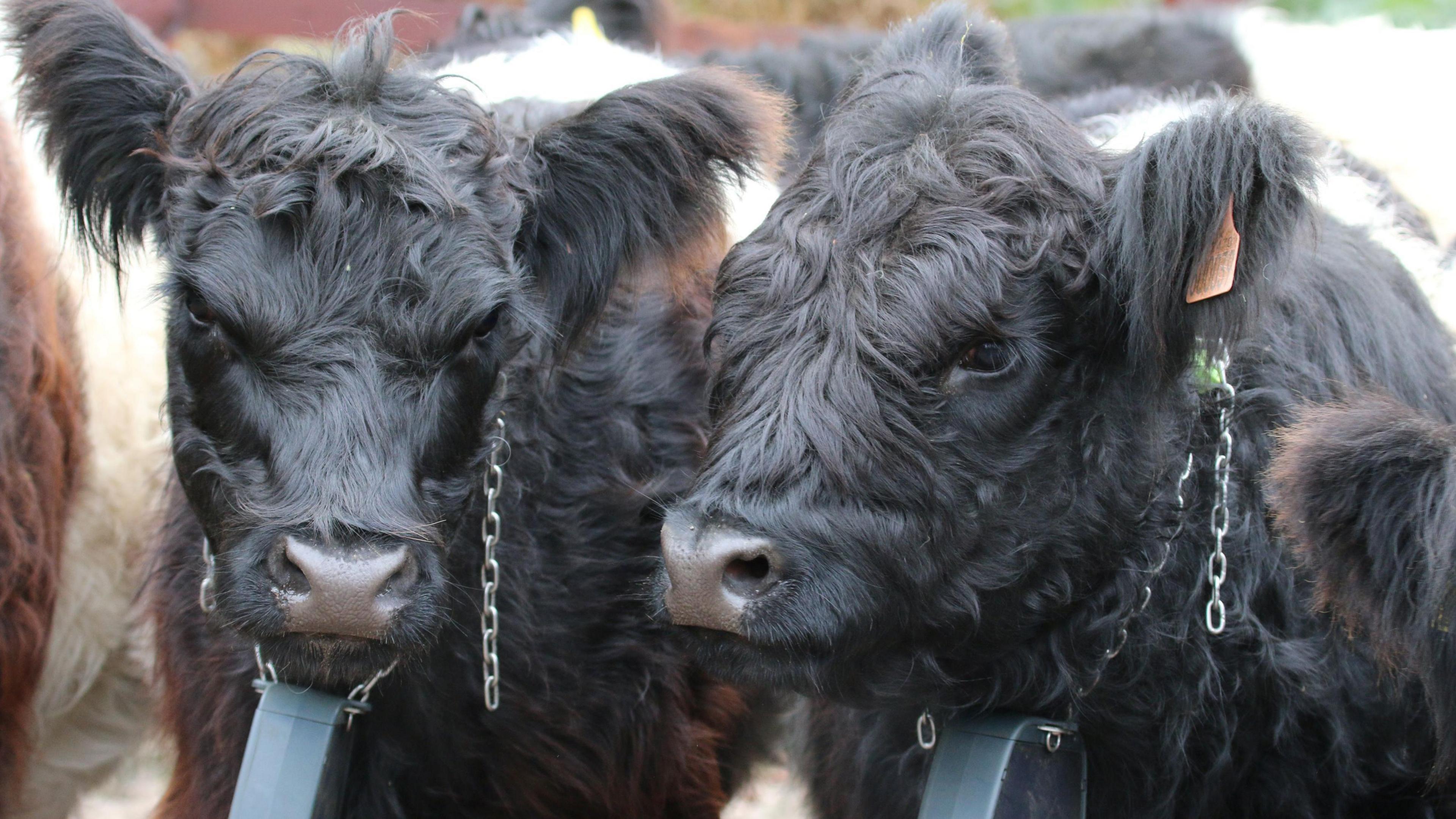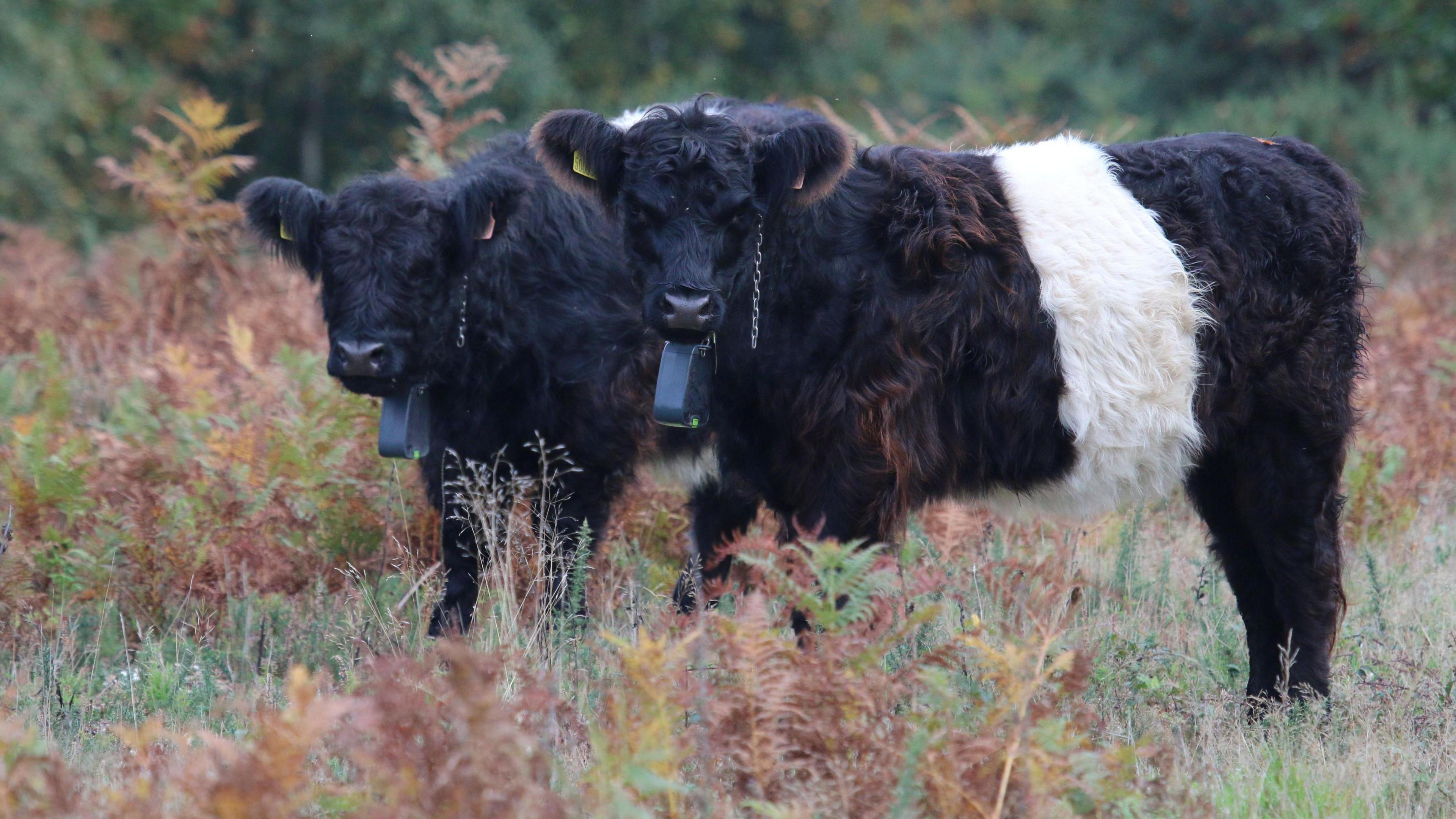Cattle grazing common after 80-year absence

The cattle wear GPS collars allowing them to roam the common without fences
- Published
Cattle are back grazing a common in Berkshire for the first time in over 80 years to help restore its rare heathland.
The herd of 10 Belted Galloway are roaming across 266 hectares (657 acres) of Bucklebury Common north-east of Thatcham, wearing GPS collars so they can be tracked without the need for fences.
The cattle's grazing and wanderings will trample down dense areas of bracken and invasive plants to allow heather and dwarf shrubs to grow to boost numbers of heathland birds, reptiles, bats and butterflies.
The heifers can be tracked via a QR code allowing members of the public to see where they are grazing, with visitors urged to give them plenty of space and to keep dogs on a lead.

It is hoped the cows grazing habits will increase numbers of heathland birds, reptiles, bats, and butterflies
Grazing on the common ceased after the World War Two and the heath became overgrown with invasive birch, willow and bracken.
The invasive plants have been cut back, allowing the flora to recover with the cattle brought in to keep the vegetation under control.
The QR code for visitors can be found on the six information boards at access points across the common.
Visitors are asked to maintain a safe distance from the cattle as, by their very nature, they are curious animals.
Remembrance postbox topper soldier stolen
- Published29 October
Aldi store approved after two-year planning battle
- Published29 October
Job fears over ambulance leadership shake-up
- Published29 October
Samantha Kerr, ranger at Bucklebury Common, said seeds that had lain dormant for more than 80 years had been found "regrowing in the areas that have been cleared.
"The cattle are a critical part of the project," she said.
"Their unique grazing, trampling and dunging behaviours will complement the mechanical work on site, strengthening the resilience of the common whilst benefiting rare and vulnerable species."
The project is part of the North Wessex Downs National Landscape Partnerships for Nature programme, funded by Defra's Species Survival Fund.
Get in touch
Do you have a story BBC Berkshire should cover?